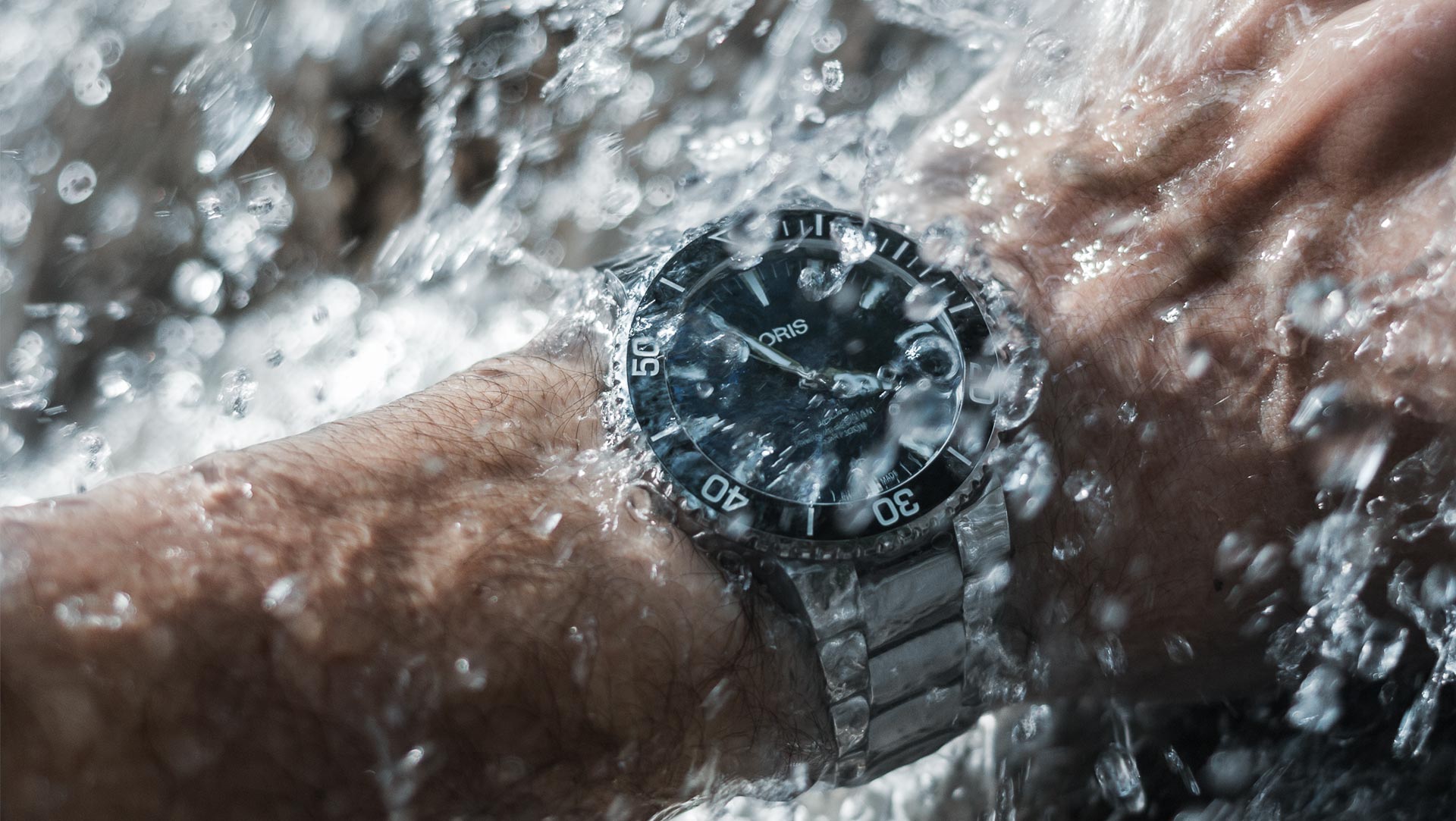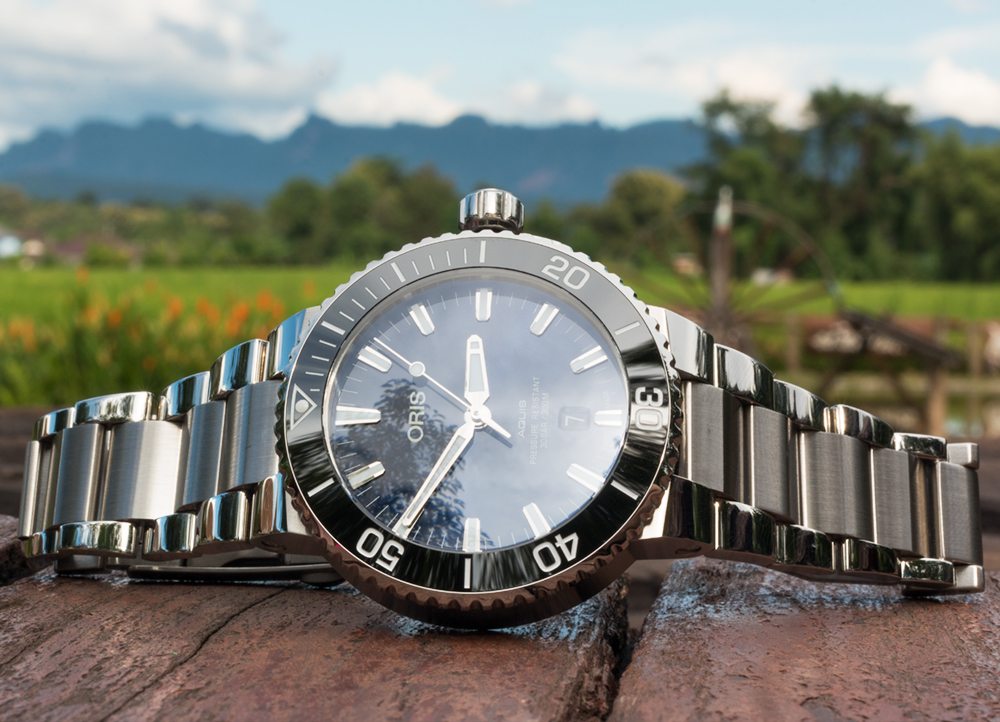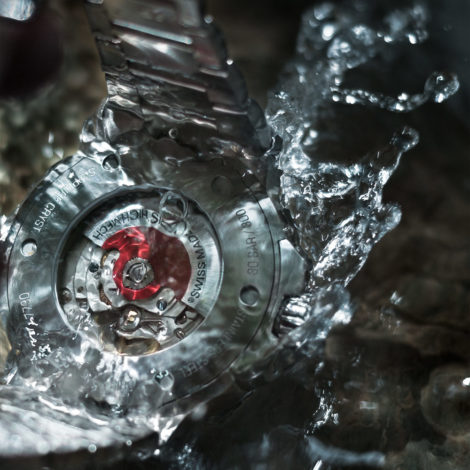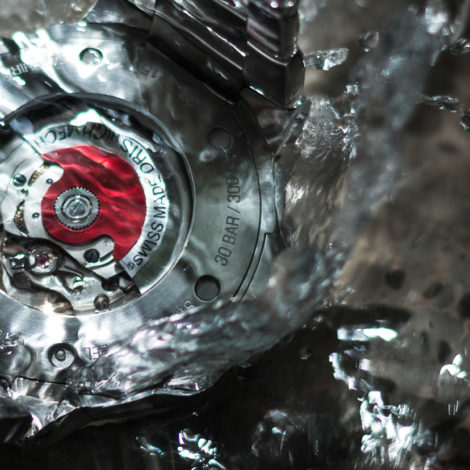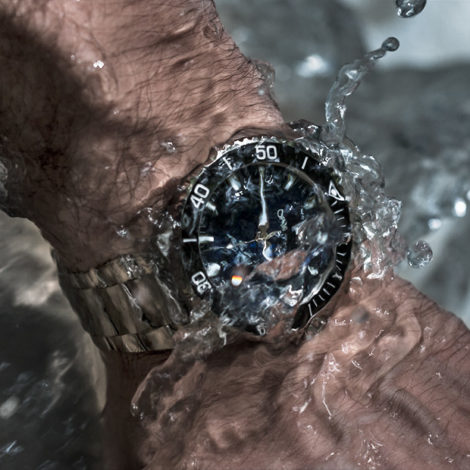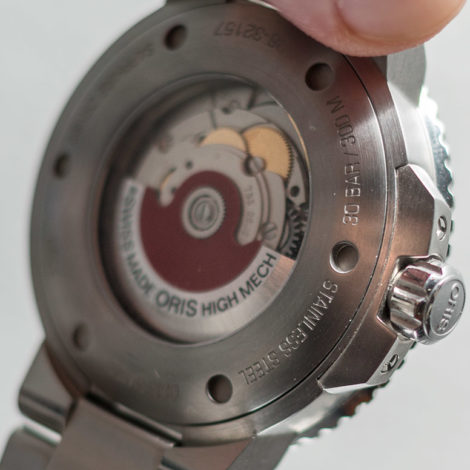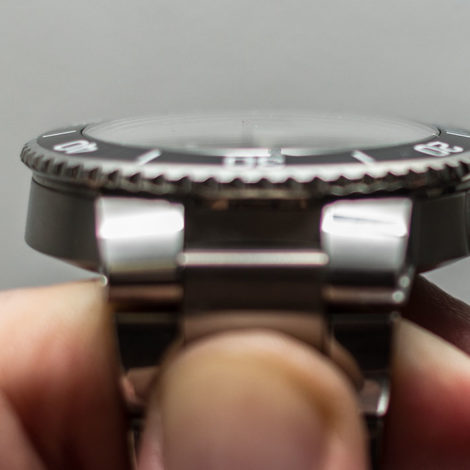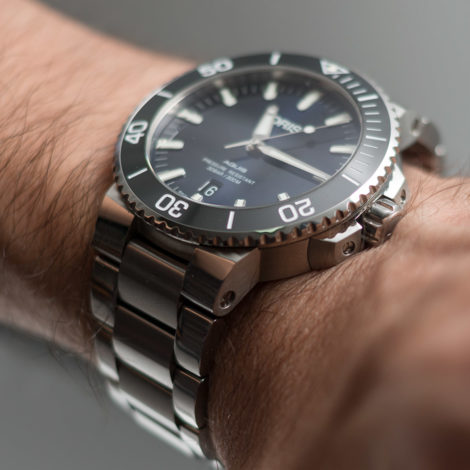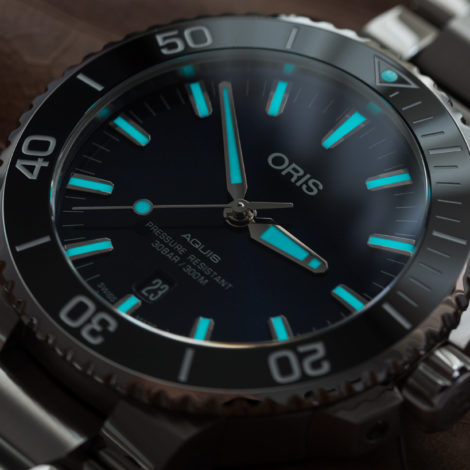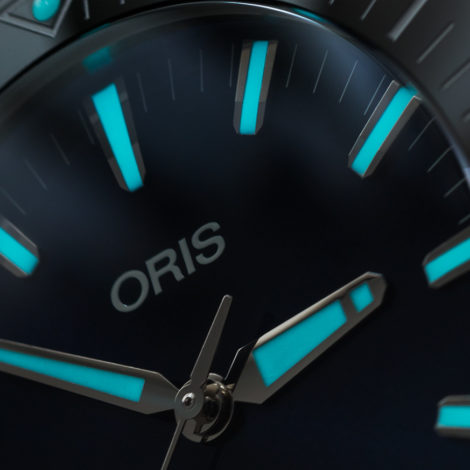
AR coatings on watch crystals are multiple nanometer-thick layers of different metal oxides, each with a different index of refraction to cancel out different wavelengths of light – in my limited understanding as an optics non-expert, that is. Besides fewer distracting reflections, less light reflected means that more light actually reaches the dial, and the result is that the textures and colors of the dial appear brighter and sharper. At least, this has been claimed, but it is consistent with my experience.

The Oris Aquis Date does feature anti-reflective coating, but on the inner surface of the crystal only. This is a common approach and better than using none, but it means that the crystal is still highly reflective – I will note right away that legibility remains good due to the contrast of the hands and indices against the dial. But general reflectiveness detracts from the overall user experience, and actually impedes one from being able to closely inspect the dial texture.


There are a few reasons for not applying AR coating to the outside of crystals. One is that people, like fish, are apparently attracted to shiny objects – as humorously discussed here in an example of the much higher-end Patek Philippe 5170P-001 suffering from the same problem. The worry of the coating itself getting scratched and looking bad is another reason, and more understandable to me, but I believe that this is less of a concern with newer watches where better technology has helped address that. Both the slight tint visible at certain angles as well as the extra cost are other reasons, but all of these are outweighed by the benefits of a well-done AR-coated sapphire crystal, in my opinion.

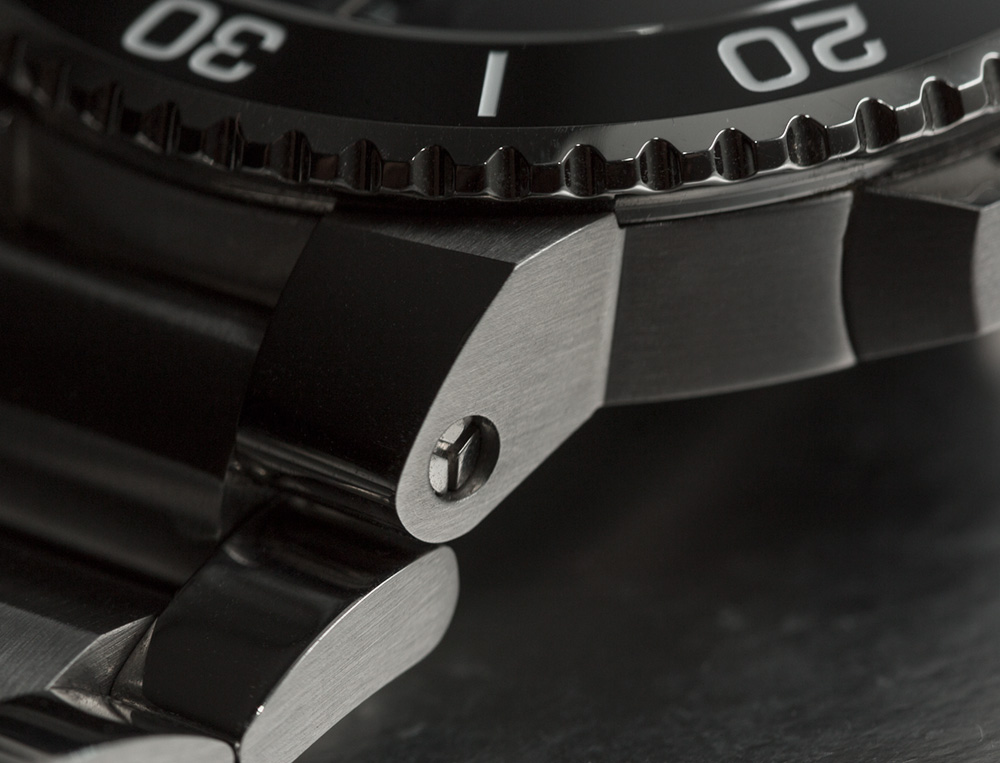
Shininess doesn’t begin and end with the crystal, however, as the dial itself, polished hands and markers, glossy ceramic bezel insert (I believe some versions give the bezel a brushed finish), as well as polished surfaces on the case and bracelet all amount to a certain level of bling – which can be good or bad depending on circumstances or tastes. This leads us to the lovely dark blue dial that I truly wish I could see more clearly. It is so dark that it often appears black, and the sunburst blue moves around with the light and angle. From a distance, the blue is subtle and barely registers but amounts to a handsome and classy touch.


A new, more angular handset is one of the most noticeable updates for the 2017 Oris Aquis, and I feel they absolutely nailed it. There have also been some slight changes to the dial text such as “automatic” being removed from under the Oris logo – but this is not something I am personally very sensitive to. The evenly applied Super-LumiNova BGW9 on the hands and indices (and bezel pip) are a particular treat of the blue dial because its green glow just makes the blue of the dial come to life suddenly – and the combination is surprisingly colorful.

Dive watch reviews are a great chance to play around with water pictures to illustrate the aquatic theme and water resistance. While I haven’t had a chance to take the Oris Aquis Date diving yet, I perhaps got a little carried away with splash pictures at a waterfall, as you can see. Of course it held up just fine, and it cleans up nicely for even relatively formal or otherwise dry situations. The Oris Aquis Date is very competitive at its price, easy to recommend, and just about as versatile a modern dive watch as you could want for the money – though with the slight caveat about shininess mentioned above. The 2017 Oris Aquis Date on the steel bracelet as reviewed has a retail price of 1,950 CHF, which is about $200 more than on a rubber or leather strap. oris.ch
Necessary Data
>Brand: Oris
>Model: Aquis Date
>Price: 1,950 CHF
>Size: 43.5mm wide, 12.5mm thick, 50mm lug to lug
>Would reviewer personally wear it: Yes.
>Friend we’d recommend it to first: Guy looking for a versatile but distinctive modern dive watch, possibly as a daily-wear or first “nice” Swiss mechanical watch.
>Best characteristic of watch: That it is simultaneously modern and classic. Excellent build quality.
>Worst characteristic of watch: Highly reflective crystal. Integrated bracelet means it doesn’t accept aftermarket strap-swapping.

